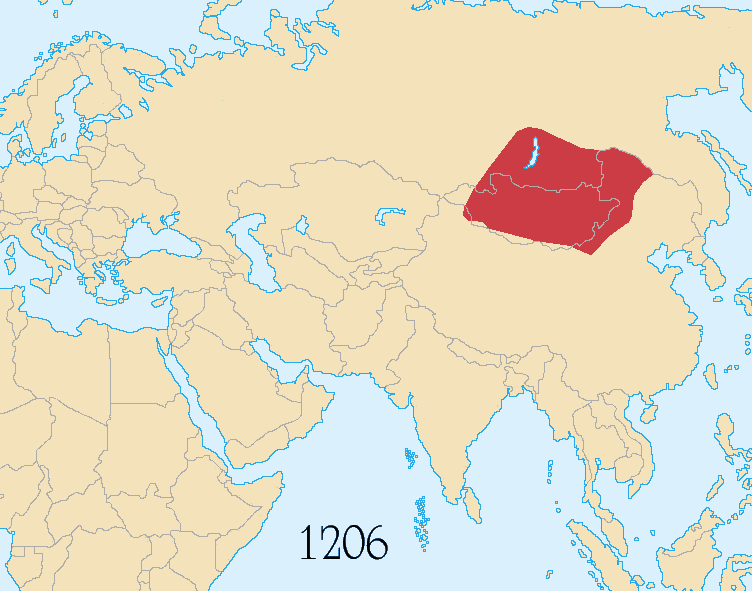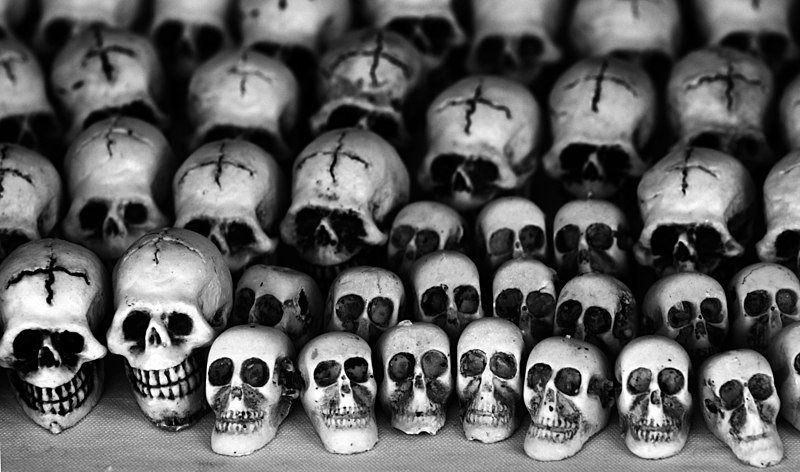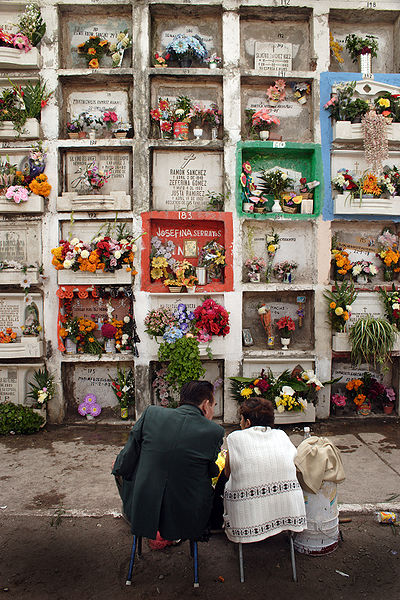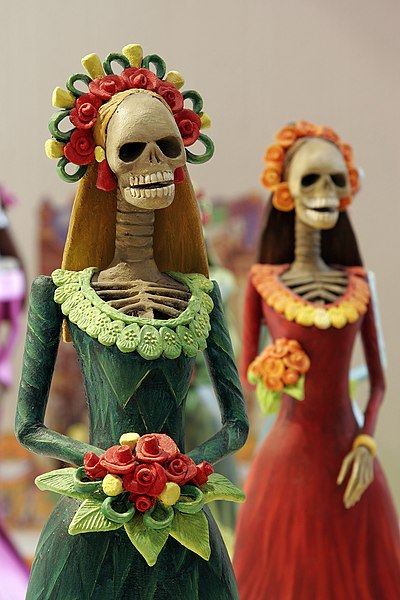.jpg/1280px-Jacques-Louis_David_-_The_Coronation_of_Napoleon_(1805-1807).jpg) |
| Typical Empire Stuff. |
Empires, they're sort of out of fashion these days (what with the colonial, imperialist domination and whatnot). There have been some major ones in history. Let's rank the top 10.
Note that this isn't necessarily the top 10 by land size or population (although such factors are important in weighing these rankings). There are some other factors, such as the length of time the empire existed, notable achievements, and its overall historic importance/influence.
Let's take the Roman Empire as an example. That thing was HUGE, right? Well, at it's greatest extent (around 117 AD), the Roman Empire claimed about five million square kilometers of the world (about 3.71% of the total land area in the world). If you're ranking empires by land size alone, that would put it in a measly 25th place. It would be well behind something like the Xiongnu Empire, a tribal confederation of nomadic peoples around Mongolia/China, and a contemporary to (part of the history of) the Roman Empire. At its greatest extent, the Xiongnu claimed nine million square kilometers and would make place #10 if ranking by land area. But you've never heard about the Xiongnu (I'm presuming), because it was a loose confederation with a poorly preserved history, and itself was much smaller than other famous empires that would cover the much or part of the same land masses (e.g. Mongols, Qing). It also only lasted a few centuries, unlike the economically dominant and well-organized Roman Empire, which lasted a massive 1,480 years by most people's count (although that number could be over 2,000 years... we'll discuss later).
Get the picture? Eh. Close enough.
10. Persian (Achaemenid) Empire
.svg/1280px-Achaemenid_Empire_under_different_kings_(flat_map).svg.png) |
| FIRST! |
I've talked about this before. Or, at least, I've talked about their
founder and greatest ruler. By total landmass conquered, they'd only rank 20th place (5.5 million square km). By length of reign, they were only a power for 220 years (nothing to discount, but compared to some others on this list, a short run). Yet there is something important about being first. Of all the empires on this list, this was the earliest. They were really the
first big empire, and set the definition for what a cross-continental imperial power could be. During the reign of Darius, their territory stretched from the Balkans in Eastern Europe all the way east to the Indus Valley in South Asia, and also down through parts of Egypt on the African continent. Of course being called a "Persian" empire, their seat of power was in modern Iran. It was notable for innovating a centralized, bureaucratic administration, building infrastructure (road and postal systems), spreading the use of an official language across its conquored territories, developing civil services, and raising a large, professional standing army. Every empire which would come after would look at the examples set by the King of Kings (
Xšâyathiya Xšâyathiyânâm, which the Achaemenid Emperor was known as), and simply copy them.
9. Abbasid Caliphate
 |
| Here is their super Emo flag. |
The Abbasid Caliphate was the third caliphates to succeed the prophet Muhammad, and its name derives from Muhammad's uncle, Abbas. Hypothetically it lasted a massive 767 years - from 750 AD all the way to 1517 AD. In actual fact, its period of rule was a "mere" 508 years, as after 1258 the Caliphate was merely a "ceremonial dynasty," based in Cairo under the Mamluk Sultans, with no true power. Its territory was centered in Baghdad (for most of its reign), but at its height in 850 AD stretched a wide 11.1 million square km from Algeria in the west (including half of Sicily and all of Crete), across Northern Africa, all of the Arabian Peninsula, much of Turkey and the Black Sea–Caspian Steppe, and to near the modern the Pakistan/India border in the east. Early in their reign, but before the height of their power, they also went as far west as Morocco and Spain (until they had to cede that to the Umayyads). Their cultural domination as an Islamic empire would last until the Mongols came and pretty much messed everyone's else shit up.
8. French Empire
 |
| Aw haw haw, we'll take these parts of the world. Merci! |
I'm not exactly sure where the American stereotype of "Haha, the French can't fight and their battle flag is a white flag" stereotype came from. It's a bit of a silly argument for a country that, until less than 100 years ago, ran a colonial empire that was the 6th largest empire in the history of mankind, well over twice as big as the Roman Empire ever was, and which occupied a whopping 8.53% of the entire landmass of the world. And by "less than 100 years ago," I really mean that. It is 2019 and the territorial height of the French Empire (technically the
Second French Empire) was in 1920. A good portion of that land mass came from controlling the majority of West Africa and part of Central Africa. And unless you're looking at a Mercator projection map which distorts any area with brown people to look smaller than it actually is, you'll realize that controlling West and Central Africa means you're controlling a giant chunk of land. The Second French Empire also controlled Madagascar, "Indochina" (which included Vietnam, Cambodia, Laos, and the Chinese territory of Guangzhouwan), Syria, Lebanon, Guiana, and a ton of islands in the Pacific, Indian and Atlantic oceans. And that was just the Second French Empire. If you want to talk about the First French Empire as well, you can't forget that they also dominated a large chunk of North America (Canada, and nearly all the modern US land west of the original 13 colonies until the Louisiana Purchase), various other New World territories (even the Falkland Islands!), and large parts of India. Yeah. Everyone has heard about the British ruling India... but did you know about the French? And these two are just their two colonial empires I'm talking about. Need I remind you about a guy named Napoleon who, although for a short period, ruled nearly all of Continental Europe?
7. Empire of the Great Qing (Qing Dynasty)
.svg/1280px-Flag_of_China_(1889%E2%80%931912).svg.png) |
| Well, this might be the coolest flag ever. |
For many centuries, the definition for what "China" was could be confusing. I mean just look at these
two wonderful
rankings. Modern China is basically what we know as "China" because the Qing Dynasty was so dominant for so long, that all the various, rival states and regions which had their own identities at one time would be assimilated into what would eventually become "China." Depending on how you define its borders (itself not an easy task), it was either the 4th or 5th largest Empire by land in history, but more importantly... it had staying power. It was established in 1636, gained full control over "China" in 1644, and lasted all the way until 1912. At its height, its Manchurian rulers dominated over Han culture (the ones who typically ruled China), as well as the Mongols and Tibetans in other lands. Alas, the Qing is more commonly known these days for its rapid downfall (European colonial abuses and unfair treaties, the Opium Wars, and the final rule of Empress Dowager Cixi and the Guangxu Emperor).
6. Umayyad Caliphate
 |
| A not insignificant chunk of Earth. |
Like the above Abbasids, the Umayyads were an early Islamic Empire, in this case the second caliphate to rise after Muhammed, beginning in 661. Remember the massive size of the Abbasid Caliphate? Well, samesies for the Umayyas, who ruled from Spain/Morocco to Pakistan/India. At its greatest extent, the Umayyad Caliphate covered 11.1 million square km and 33 million people, making it one of the largest empires in history by both area world population. The greatest extent of their Empire was from around 720 to 750, the latter of which is ironically also the final year of the Umayyad Caliphate. Yeah, there was no "slow decline" like with the Roman Empire or Qing Dynasty. This was a quick crash-and-burn, going from the biggest empire in the history of the world to a non-entity instantly, following the defeat and death of their Caliph, Marwan II, by the Abbasids. The Abbasid Caliphate was a big, mighty, long-lasting empire, but most of the hard work of building up that empire had been done by the Umayyads. Building up a giant Navy to defeat the Byantine Empire? That was the Umayyads. Constructing the Dome of the Rock at Jerusalem? Umayyads.
5. Ottoman Empire
 |
| And did I forget to mention HAREMS? |
If you want to talk about long-lasting empires, the Ottomans had a good 623 stretch between 1299 and 1922. Just think about that. 1299 is, like, around when the film
Braveheart is set. 1922 is after World War I. The same political entity (the Ottoman Empire) existed both when William Wallace was fighting King Edward I and when American Prohibition was happening. I don't know if that blows your mind, but it blows mine. It terms of land size, the Ottomans were "just" as big as the Roman Empire (actually, slightly bigger), and controlled much of Central and Southeast Europe, Western Asia and North Africa. The height of its power was between the 16th and 17th Centuries, especially the reign of Suleiman the Magnificent. Most people think of the Ottoman Empire as being "Turkish," but can't really come to grips with how close the Empire came to "European" cities like Vienna and and Kiev. Budapest? The Ottomans ruled it. The Adriatic Coast? Mostly Ottoman. Athens? Ottoman. Algiers, Tunis, Tripoli, Cairo, Medina, Mecca, Jerusalem, Baghdad, etc - all Ottoman (or Ottoman vassals). Now that I've talked about the Ottomans, Umayyads and Abbasids - it's time to share a FUNFACT! You know the four colors on most Arab flags? They're black, white, green and red. Those Pan-Arab flag colors are actually chosen to represent four major Arab/Islamic Empires. Black represents the Abbasids, White represents the Umayyads, and Red represents both the Ottomans and Hashemites (of Jordan). Green represents the Fatimid Caliphate, but they didn't make the top 10 cut, so forget hearing more about them.
4. Spanish Empire
 |
| Just the red parts. And the blue. And the green. And the orange. |
It should not surprise you that the Spanish Empire makes this list. After all, in 1493 Pope Alexander VI issued the Papal Bull
Inter Caetera, which divided the entire world in half and gave the Spanish the right to claim whatever they wanted on the left side of the line (Portugal got everything on the right side of the line, and while they had a significant empire as well for a while, it doesn't make the top 10 cut). Because of the Papal Bull and other treaties, Spain went crazy on the New World, ruling an uninterrupted territory, north to south, from modern Canada to Chile. In addition to that uninterrupted territory, the Spanish had a lot of other territory in the New World, as well as colonial possessions in Africa (Sahara, Guinea), China, and the "Spanish East Indies" (basically the Philippines). If you count the period of time between 1580 and 1640 when the Spanish and Portuguese crowns were merged, all of Portugal's colonial possessions from Brazil, across Africa, and throughout Asia, can also be counted as part of the "Spanish Empire." The Spanish Hapsburg family also ruled a large chunk of Europe at times too, including much of Italy, as well as Belgium and the Netherlands. At its height (around 1810, before many of the New World colonies began revolution), the Spanish Empire was 13.7 million square km, taking up 10.17% of the total land in the world. The Spanish Empire is often seen as the first truly "global" empire.
3. Roman Empire
 |
| Look at this measly little 5.5 million square miles. Bleh! |
Like I said in the intro, compared to Empires which would come later, the actual territory of the Roman Empire wasn't as big as many might think. However, at 117, they ruled from Hadrian's Wall in northern Britain, all the way through France, the Iberian Peninsula, all across Northern Africa and down the Nile, all of Judea and the surrounding land, all the way east through Babylonia to the Arabian Gulf, up to Armenia and through the Black Sea–Caspian Steppe, and... ya know... everything in-between (Southern and Eastern Europe, Turkey, the entire Mediterranean). The fact that it wasn't as big as the... oh, let's say the much more massive Russian Empire in the late 19th Century which was over 4 times its size... doesn't matter because it's cultural and historical significance are unquestionable. Its society, culture, government, politics, military, economy, language, architecture, food, weapons, sporting events (gladiatorial combat, anyone?), clothing, arts, sciences, religion, writings, philosophy, etc. are all studied, copied, and modeled after by societies these days. There are endless books, TV shows, movies, which look back to this era for its setting. Several of Shakespeare's plays are set in the Roman Empire. Minor government officials in the Roman Empire are significant characters in a major religion, for Christ's sake!(har!). And it lasted for quite some time. 1,480 years (from its founding in 22 BC until the collapse of Constantinople in 1453 AD) is the usual time frame given for the length of the Roman Empire. Some people give a shorter number (arguing that the Eastern/Byzantine Empire should count as a different political entity, although when it actually existed nobody called it the Byzantine Empire and it was recognized as
the Roman Empire). Others can give an even longer time, citing the earlier Roman Kingdom and Roman Republics as precursor states, and claiming a lineage going back from 753 BC - a whopping 2,206 years.
2. Mongol Empire
 |
| Basically... everywhere |
The Mongol Empire was, and continues to be (to this day), the largest contiguous land empire in history. At its height in the late 13th and early 14th centuries, it took up 24 million square km (about five times larger than the Roman Empire above), which took up nearly 18% of all the land in the world. Eurasia is big. The Mongol Empire occupied most of it. The empire consisted of all of modern Mongolia, China, North Korea, South Korea, Kazakhstan, Kyrgyzstan, Tajikistan, Turkmenistan, Uzbekistan, Afghanistan, Iran, Azerbaijan, Armenia, Georgia, Ukraine and Moldova; the vast majority of inhabitable Russia (excluding Siberian wastelands where nobody really lives); the majority of Iraq, Turkey, Belarus and Pakistan; and parts of Poland, Romania, Syria, India, Burma, Laos and Vietnam. It was huge. In order to create this empire, the Khamag Mongol (the precursor entity to the Mongol Empire), had to conquer a number of other powers, including the Khwarazmian Empire, Qara Khitai, Jīn dynasty, Song dynasty, Western Xia, Abbasid Caliphate (ranked above), Nizari Ismaili state, Kievan Rus, Volga Bulgaria, Cumania, Alania, Kingdom of Dali, Kimek Khanate, Goryeo, and the Sultanate of Rum. It also lasted for 162 years, which might not be that long compared to others on this list – but in reality, when it split it simply split into four new quasi-Mongol Empires – the Yuan Dynasty, Ilkhanate, Chagatai Khanate, and the Golden Horde. A list of things that can be attributed to the legacy of the Mongol Empire is too long to go through here, so go to Wikipedia if you need all of that stuff. You’ve probably read news articles about some certain percentage of people in the world being descended from Genghis Khan. And while what that percentage exactly is has been argued by different scientists and Y chromosome DNA studies – the point is the Mongolians writ large got around and implanted their DNA across large chunks of Eurasia. Even after the Mongolian hordes stopped being an imperial power, their locals assimilated into societies across the lands they once ruled.
1. British Empire
 |
| That's a lot of flags. |
So at the beginning of this, I said that total landmass ruled wasn’t the determining factor I’d use in order to rank the most significant empires in history. Yet not without coincidence, the #2 and #1 empires also happen to be the #2 and #1 empires by land mass as well, with the British Empire occupying a whopping 35.5 million square km at its height around 1919ish, consisting of over a quarter of all land on Earth (26.35%). The idea of a “global” empire first became a reality with the Spanish Empire, but the British took it to the next level with a conquest of basically everything. At various times in history, the British Empire has consisted of everything from Canada and the Thirteen Colonies, much of the Caribbean, British Honduras and Guiana, an occupied Ireland, Gambia, Sierra Leone, the Gold Coast, Nigeria, a solid and unbroken stretch of Africa north-south from Egypt to South Africa, much of the Middle East including Palestine, Jordan and Iraq, India, Burma, Malaya Brunei, Hong Kong, Australia, New Zealand, Papua New Guinea and a bunch of Pacific Islands. That’s not a definitive list either, just a general brushstroke. “The sun never sets on the British Empire” is a common saying (although again, likely stolen from the Spanish who initialized the concept), but it held true – the British Empire was so big that at any given time at least one of its dozens and dozens of territories across the world would be in the sunlight. Decolonization in the 20th Century may have broken the empire apart, but a huge part of the world still remain as part of the British Commonwealth, and thus you’ll still see the British Queen on the coins of a ton of countries (according to Guinness World Records… 35 countries feature Elizabeth II on their money). So in some ways, the British Empire is still sort of with us.


.jpg/1280px-Toronto_Raptors_Giveaway_at_St._Michaels_College_Basketball_Tournament_(16090033023).jpg)



.jpg/1280px-Jacques-Louis_David_-_The_Coronation_of_Napoleon_(1805-1807).jpg)
.svg/1280px-Achaemenid_Empire_under_different_kings_(flat_map).svg.png)


.svg/1280px-Flag_of_China_(1889%E2%80%931912).svg.png)













.jpg)






















.jpg/800px-Calaveras_Tonal%C3%A1_(1).jpg)


.jpg/800px-Calaveras_Tonal%C3%A1_(2).jpg)